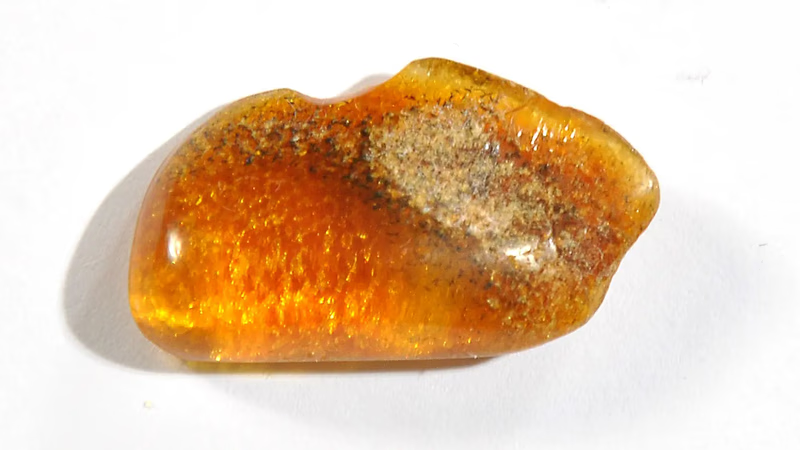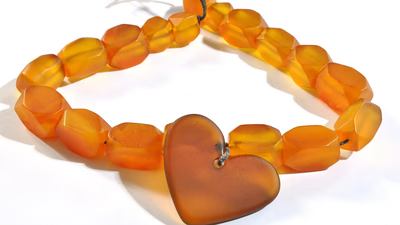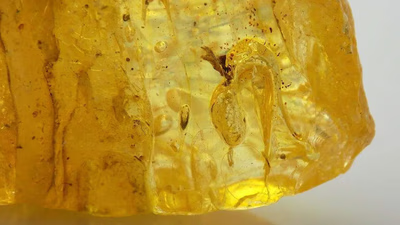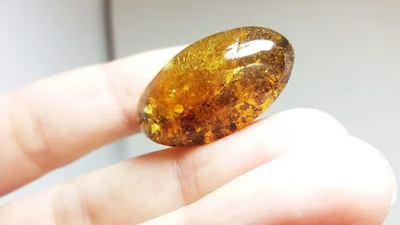
Diverse colors of West Asian Amber for trade insights.
Honey-colored Amber is one of the most prevalent and sought-after colors found in West Asian Amber. It often exhibits warm golden shades, ranging from light amber to deeper, rich honey tones. Cognac-colored Amber is another prominent color found in West Asian Amber. It showcases shades similar to the amber liquor, ranging from light and translucent to deeper, reddish-brown hues. Cherry-colored Amber is characterized by its reddish tones reminiscent of ripe cherries. It can range from light reddish-orange to darker, more intense shades.
The most common amber stone is composed of the coniferous plant Pinus succinifera. Other conifers also produce amber, but often produce much less amber. But in answer to the question of what exactly is the color of amber; In fact, there is no single answer, because this natural resin is formed in different color spectrums. To date, more than 250 different color spectrums and 7 main colors of amber have been identified, ranging from yellow to orange and even white to green and blue. But all of these colors of amber are commonly used in jewelry making. The best known examples of amber are:
- Yellow Amber Gem
Yellow amber pieces are found all over the world. Yellow amber makes up about 70% of the world's amber. The main location of amber was found in the Baltic Sea region and this region is still the best market for amber in terms of quality and quantity. - Green Amber Gem
About 2% of the color spectrum of amber stone belongs to its green color and is very popular among people. The best known examples of green amber belong to the Dominican Republic. The interesting thing is that; Green amber is not found naturally, because this color is created completely when yellow amber is heated. - Usually the price of green amber stone depends on the depth of the green shade in the stone. The deeper the green amber, the more expensive it is, and the closer it is to yellow, the cheaper it is.
- Because this color of the original amber stone is more prominent when combined with silver, many jewelry makers use green amber and silver. It is interesting to know that throughout history, some people believed that this amber color has the ability of immortality and happiness.
- Red Amber Gem
One of the rarest colors of the original amber stone is red amber, and out of every 200 samples of amber, only one is red. The red amber stone is very original and can have a very deep red color and a cherry color spectrum. The price per gram of red amber is very expensive. According to archeological findings, the red amber ring was originally used by wealthy people in ancient times. - Because it was so difficult to find this amber years ago, only very wealthy people could afford it. But today it is not difficult to find red amber and jewelry made from it.
- Blue Amber Gem
Amber Blue is the rarest color of amber. However, blue amber is relatively new to the jewelry industry. The amber stone must be exposed to adequate light, otherwise it will look brown or yellow like any other piece of amber. The attractive property of amber is that it changes when it is exposed to fluorescent light.
Butterscotch-colored Amber is a lighter shade of amber with a warm, yellowish-brown color. It often exhibits a soft and translucent appearance. Olive-colored Amber is a unique variation found in West Asian Amber. It showcases greenish hues with undertones of yellow and brown, resembling the color of olives. West Asian Amber can also exhibit green hues, although they are less common than other colors. Green Amber can range from pale greenish-yellow to deeper, mossy green shades.
-

West Asian Amber features a diverse color spectrum, with honey-colored and cognac-colored amber being among the most sought after. Honey-colored amber displays warm golden shades, while cognac-colored amber ranges from light to deep reddish-brown hues. Cherry-colored amber, characterized by its reddish tones, adds to the variety. The primary source of amber is the coniferous plant Pinus succinifera, although other conifers produce lesser amounts. Over 250 color spectrums and seven main colors of amber have been identified, including yellow, orange, white, green, and blue. Yellow amber constitutes about 70% of global production and is primarily sourced from the Baltic Sea region. Green amber, which makes up about 2% of the spectrum, is created by heating yellow amber and is often paired with silver in jewelry making. Red amber is rare, found in only one out of every 200 samples, historically favored by the wealthy due to its scarcity.
Blue amber is the rarest type and changes color under fluorescent light. Other notable colors include butterscotch and olive-colored ambers. Each type has unique characteristics that influence its market value and appeal in jewelry design.
-

The Asian market plays a crucial role in the global amber gemstone trade, with countries like China, India, Thailand, and Hong Kong leading in both domestic and international sales. The growing consumer base in Asia has heightened the demand for amber due to its cultural significance and perceived healing properties. Buyers and sellers are encouraged to research prices and work with reputable sellers to ensure fair transactions. Online platforms have gained popularity, offering convenience and access to a diverse range of amber gemstones. These platforms often feature special deals that can lead to attractive pricing. Understanding local regulations regarding import/export and ensuring gemstone authenticity is vital for smooth transactions. Direct purchasing from production units is a cost-effective method for buyers, allowing them to acquire high-quality amber at reasonable prices. The proximity to production sources and skilled artisans contributes to competitive pricing in the Asian market. Additionally, various trade shows and exhibitions provide opportunities for networking among buyers and sellers, showcasing a wide array of gemstones including amber.
-

Amber has been valued since ancient times, with archaeological evidence tracing its use back to the Stone Age. It was traded extensively, particularly Baltic Amber, which became a significant commodity during the Roman Empire. This gemstone held cultural importance across various civilizations, often used in religious ceremonies and as decorative items believed to possess protective and healing properties. The Baltic region, especially Lithuania, Latvia, and Estonia, is renowned for its high-quality amber known for its rich colors and clarity. Each locality offers unique characteristics that enhance its desirability. Today, amber continues to be cherished in jewelry and scientific research. While often mistaken for a gemstone, amber is actually fossilized tree resin. The oldest known amber dates back approximately 320 million years.
In Asian cultures, it symbolizes courage and protection during journeys. The Greeks and Romans recognized its origins, with Aristotle referring to it as "succinum. " Modern sources of amber include the Dominican Republic, known for rare blue variations; Mexico"s Chiapas region; and historical sites in Poland, Russia, Ukraine, and Belarus. Amber"s global presence extends to Myanmar, Canada, the U. S. , Lebanon, and parts of Africa.
-

The original Asian Amber gemstone, often referred to as Baltic Amber, is associated with various benefits for the body and mind, primarily rooted in traditional beliefs and alternative healing practices. Advocates claim that Amber has a calming effect, promoting relaxation and reducing stress and anxiety. It is also thought to absorb negative energies and convert them into positive ones, enhancing emotional stability and vitality. Many users wear Amber jewelry or utilize Amber-infused products to experience these purported effects. The gemstone is believed to possess anti-inflammatory properties due to its succinic acid content, which may aid in reducing pain and supporting immune health. Additionally, Amber is linked to emotional support, helping alleviate feelings of depression and fostering a more optimistic outlook. Its therapeutic applications are extensive, including treatments for conditions such as arthritis, asthma, eczema, and more. While many individuals find value in these claims, it is essential to approach them with caution as scientific evidence may not fully support these assertions.
Consulting healthcare professionals for specific health concerns remains advisable. Overall, the perceived advantages of Asian Amber highlight its role as an energetic purifier that can transform negative energies into positive frequencies.
-

Amber gemstones are valued based on their design, quality, and origin. Unique patterns, inclusions, and vibrant colors significantly enhance their worth. The craftsmanship involved in shaping and polishing the gemstone also plays a crucial role in pricing. Regions like the Baltic are renowned for high-quality Amber, which can command higher prices due to their reputation. Factors such as the type of stone, design quality, and quantity ordered influence pricing. Additionally, Amber"s ability to preserve ancient inclusions adds to its desirability among collectors. Treatments like heat enhancement can affect value; untreated stones are generally more sought after. Market dynamics, including supply and demand fluctuations, also impact pricing trends.
Buyers should seek reputable sellers for original Amber gemstones with exceptional designs at reasonable prices. "





